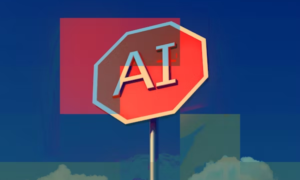Introduction:
In the fast-paced world of technology, the quest for innovation often overshadows the environmental impact of our electronic devices. However, a paradigm shift is underway as the tech industry embraces a more sustainable approach. This article delves into the realm of green electronics, exploring the sustainable practices that are reshaping the landscape of technology.
The Need for Green Electronics:
A Growing Imperative:
As the demand for electronic gadgets continues to soar, so does the ecological footprint of the tech industry. The manufacturing processes, resource extraction, and electronic waste generated contribute significantly to environmental degradation. In response to this, a wave of consciousness has swept through the tech sector, leading to a reevaluation of practices and the emergence of green electronics.
Shortening Supply Chains for Sustainability:
One key strategy in the pursuit of green electronics is the shortening of supply chains. By reducing the distance that raw materials and components travel, companies can minimize their carbon footprint. Local sourcing not only supports regional economies but also decreases transportation-related emissions. This shift towards shorter supply chains is a vital step in creating a more sustainable and environmentally friendly electronics manufacturing process.
Transitioning to Circular Design Principles:
Circular design principles are gaining traction as a cornerstone of sustainable electronics. Unlike the traditional linear model of production and disposal, a circular approach promotes reuse, refurbishment, and recycling. Manufacturers are increasingly focusing on designing products with longevity in mind, using modular components that are easy to repair and upgrade. This not only extends the lifespan of devices but also reduces the need for constant production, cutting down on electronic waste.
Energy-Efficient Manufacturing Processes:
Another pivotal aspect of green electronics is the adoption of energy-efficient manufacturing processes. The production of electronic components and devices often requires significant energy consumption. By investing in renewable energy sources, such as solar or wind power, manufacturers can significantly decrease their carbon footprint. This shift not only aligns with sustainability goals but also contributes to the global effort to combat climate change.
Transparency and Responsible Sourcing:
Transparency in the supply chain has become a buzzword in the realm of green electronics. Consumers are increasingly conscious of the environmental and ethical implications of their purchases. As a result, tech companies are embracing transparency, providing detailed information about the sourcing of raw materials, manufacturing processes, and the overall environmental impact of their products. Responsible sourcing practices, including conflict-free minerals and ethical labor practices, are becoming integral to the green electronics movement.
E-Waste Management and Recycling Initiatives:
One of the significant challenges posed by the tech industry is the mounting issue of electronic waste. Green electronics initiatives prioritize responsible e-waste management and recycling. Manufacturers are developing programs to take back old devices, ensuring that they are recycled or disposed of in an environmentally friendly manner. Some companies are even incorporating recycled materials into the production of new devices, closing the loop on the electronic product life cycle.
Government Regulations and Industry Standards:
The push towards green electronics is not only driven by consumer demand but also by government regulations and industry standards. Many countries are enacting legislation that mandates electronic waste recycling and restricts the use of hazardous materials in electronics. Compliance with these regulations is not only a legal requirement but also a demonstration of a company’s commitment to sustainability.
Collaboration for a Sustainable Future:
The transition to green electronics requires collaboration across the entire tech industry. Companies, suppliers, and consumers all play vital roles in creating a more sustainable future. Collaboration fosters innovation and the sharing of best practices, accelerating the adoption of green technologies. Industry-wide initiatives and partnerships are essential to overcoming the challenges posed by the complex supply chains inherent in the tech sector.
The Consumer’s Role in Driving Change:
Consumers wield significant influence in shaping the direction of the tech industry. The demand for sustainable products is a powerful force driving manufacturers to prioritize environmentally friendly practices. As consumers become more informed about the environmental impact of their electronic devices, they are making choices that align with their values, encouraging companies to embrace green electronics.
Educating the Next Generation of Innovators:
The future of green electronics lies in the hands of the next generation of innovators. Educational institutions are recognizing the importance of incorporating sustainability into technology-focused curricula. By instilling eco-conscious values in future engineers and designers, we can ensure a continued commitment to green electronics throughout the industry.
Conclusion:
The evolution towards green electronics represents a critical juncture in the tech industry. The shift towards sustainability involves reimagining the entire lifecycle of electronic devices, from design and manufacturing to usage and disposal. Shortening supply chains, embracing circular design principles, prioritizing energy efficiency, and responsibly managing e-waste are all integral components of this transformative journey. As consumers, manufacturers, and policymakers unite in their commitment to green electronics, we embark on a path toward a more sustainable and environmentally friendly tech landscape.



































